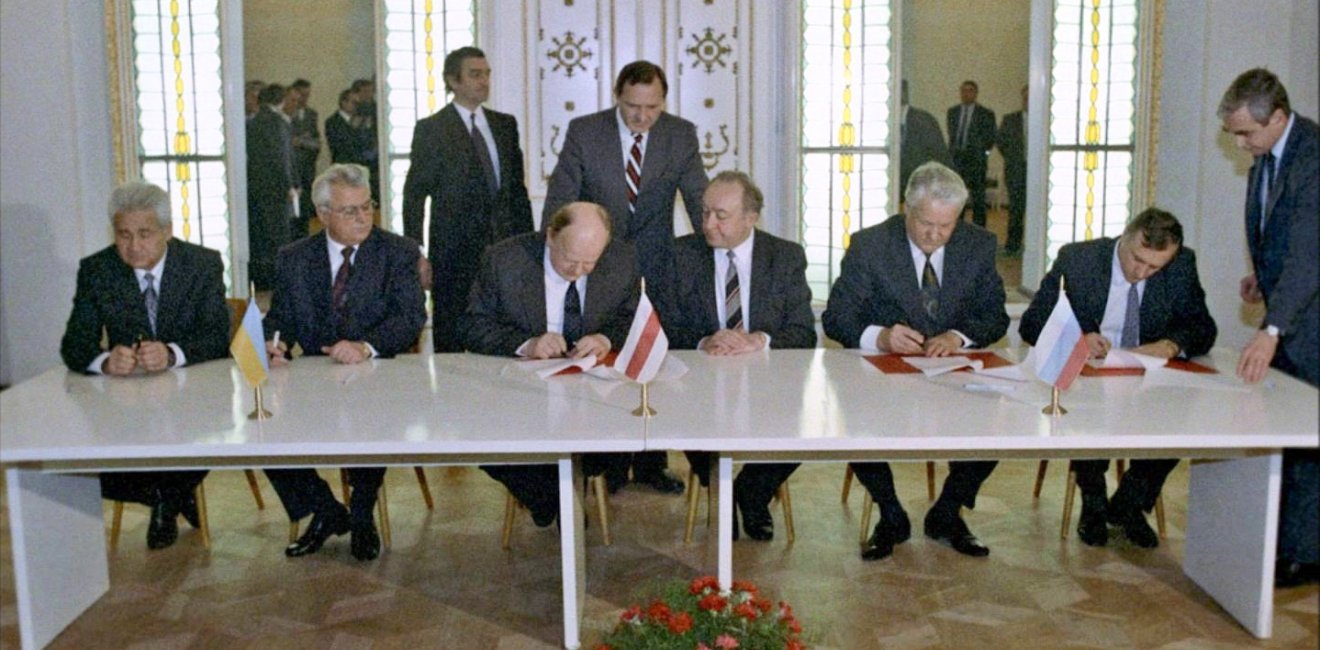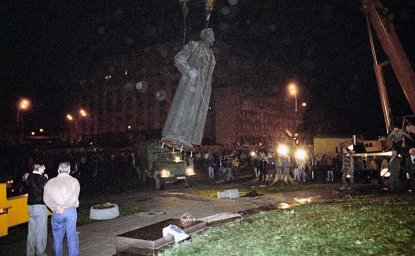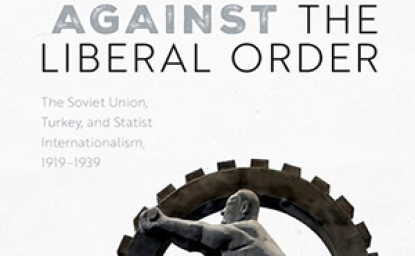Remarkable common themes permeate the end of the Soviet Union in December 1991 with events today. The international differences are glaring, but the commonalities within the United States are strong.
In December 1991, the United States was the sole super power having supported the independence of Poland, Hungary, Czechoslovakia and the unification of Germany into NATO. George H.W. Bush had created a coalition that had repulsed Iraq from Kuwait and collected the economic costs of war from other nations. It was in the process of creating a North American trading regime and had succeeded in forcing the Japanese to open up their markets to American vehicles. China was consumed with internal problems and the US had withdrawn Most Favored Nation status with no tangible consequences to the U.S. economy. In short, the United States was and acted as the sole super power.
The Soviet Union, on the other hand was severely weakened with the loss of its European republics, and declarations of independence from the 3 Baltic states. Its economy was in shambles with the blatant failure of the cooperatives law and hoarding taking place on a massive scale. Washington could negotiate the Soviets into accepting a conventional forces agreement for Europe and approach a START treaty that met nearly every one of its demands. There was no bragging from Washington, but Soviet losses were clear to its citizens.
Within the United States, 4 commonalities can be found between December 1991 and today: In 1991, a rising tide of isolationism in both the Republican and Democratic parties blew through the country after a victorious 1st Iraq war. There existed the call for George H.W. Bush to focus more on domestic issues and leave to the Europeans the alarming problems in the Balkans. Second, the candidacy of Pat Buchanan and the language with which he communicated to his followers was a precursor to Donald Trump. Populism was vibrant. Related to this, the debate over NAFTA and the challenges for its passage through Congress were high. Free trade was already contentious and the trade unions were determined to stop it. Finally, there existed a fear that liberal democracy which had swept Eastern Europe might be reversed. Mikhail Gorbachev and his reforms rejected the totalitarian system. Instead, he would introduce a new form of democracy and economic liberalism, but the apparatchiks were contemptuous of the reformer. Only when their putsch against Gorbachev failed in August 1991 did the White House wake up to the prospect of a return to old time authoritarianism, and maybe fascism.
December 1991 presented the prospect of 9 new republics, several of whom had nuclear strategic weapons on their soil. More had tactical nuclear weapons and the manpower with which to launch an attack against Europe. It was a highly unpredictable time. Added to that, the Soviet economy was in a tail spin with Gorbachev unable to decide how to transition from a centrally planned economy to a free market system. Meantime, Soviet citizens tightened their belts and did without. Citizens in the new republics did the same, but their grumbling against Moscow was loud.
Distinct nervousness existed in Washington. Senators Sam Nunn and Richard Lugar had introduced a bill the previous month to appropriate $400 million per year to safeguard nuclear weaponry and employ Soviet scientists and engineers. Recognizing that ‘loose nukes’ were a danger to all mankind, there was little objection to this bipartisan policy, but Congress was not willing to bail out the Soviet economies and less effort was given to help the transformation to a market economy, if the Russians knew how.
Instead, George H.W. Bush and his Secretary of States, James A. Baker sought greater multilateral cooperation. Washington did not have the resources to lead a post-Cold War settlement and a coalition of like-minded nations was needed to ensure that Russia was not treated like Germany in 1919. In response to grumbles regarding NATO’s purpose now that the USSR was no more, Washington proposed the establishment of the North Atlantic Cooperation Council (NACC). It should provide a forum for dialogue and cooperation with the former Warsaw Pact adversaries. It promised a new cooperative relationship with all countries of Central and Eastern Europe.
Today, the United States is no longer the sole super power. Once again it is absorbed in its own domestic problems and the European Union faces the strains of fragmentation. At this critical juncture, we should consider which Trans-Atlantic institutions can best help us to weather these turbulent times. Vladimir Putin’s Russia reemerges and NATO struggles to devote 2 percent of GDP to defense expenditures. On the economic front, we should rescue elements of the Trans-Atlantic Trade & Investment Partnership (TTIP). Political leaders on both sides of the Atlantic should instruct their respective negotiators to continue seeking accords on environmental and safety standards, intellectual property rights, digital commerce, visas and much else that positively affects ordinary citizens. Twenty-five years ago we made every effort to keep the post-Cold War Settlement. Now, we must make a similar effort to sustain prosperity and peace.





